American Government Teaching Resources
Explore American government teaching resources for elementary and middle school — created by teachers for teachers like you! From teaching kids about local, state and federal governments to helping students understand the United States electoral process, this collection is stocked with everything you need to create social studies lesson plans with impact!
When it comes to the government for kids, there's a lot to unpack in the classroom. More than ever, our country is examining and reexamining the laws put in place to protect and guide us. It can be overwhelming to explain those concepts to students who are too young to vote or run for office.
To help you boost your social studies and government lesson plans, our team of expert teachers has put together a collection of printable games, projects, activities, and American government worksheets for kids to simplify your lesson planning.
Whether it's your first year teaching about government or you're just on the hunt for some ready-made resources to save you time, our teacher team has you covered. We know the concepts surrounding government can be particular abstract for young kids, and that can make it a challenge to teach about. Read on for a primer to supplement your planning, including a kid-friendly definition of government and the different types, ways to explain the different branches and levels of the US government and some activities to hook your students' interest.
What Is a Government? A Kid-Friendly Definition
Let's get started with a kid-friendly definition of the term "government" that may come in handy in your classroom.
Government is a system or group of people with the authority to make and enforce laws, rules and decisions for a community or a country. A government provides different services to its citizens and helps maintain order.
What Are the Different Types of Governments?
The world is full of different countries and different governments that oversee those countries. If you're teaching your students the differences between each different type of government, this list may come in handy!
Democracy
If a country's government is democratic, it means the people have the power. Citizens in a democracy have the right to vote and participate in decision-making through elected representatives. Democratic governments emphasize individual freedoms, equality and protection of rights.
Republic
A republic is a type of government where the power is held by elected representatives. The head of the government is typically a president, and the government is bound by a constitution.
Monarchy
A monarchy is a type of government with a king or queen serving as the head of state. The royal position is usually inherited within a family. For example, King Charles inherited his role as head of the United Kingdom from his mother, Queen Elizabeth II.
Monarchies can be constitutional, where the ruler's power is limited by a constitution, or absolute, where the ruler has unrestricted power.

Dictatorship
In a dictatorship, a single person or a small group holds absolute power in the government. Individual freedoms and rights may be limited or suppressed, and dissent is usually not tolerated. Dictators are not chosen by members of the society. Instead, they appoint themselves as the head of the government.
For example, North Korea's government is considered a dictatorship with King Jong Un in charge.
Totalitarianism
Totalitarianism is a form of government where the state exercises extreme control over all aspects of public and private life. It suppresses dissent and restricts individual freedoms. Totalitarian governments also tightly regulate the economy and society.
Nazi Germany was an example of a totalitarian style of government.
Theocracy
In a theocracy type of government, religious leaders hold the ultimate authority. The country's laws and running of the government are both based on religious beliefs. In this form of government, religious texts or doctrines guide decision-making, and the government is often mixed with religious institutions.
Oligarchy
In an oligarchy, a small group of individuals holds power and influence over the government. The decision-making process is limited to the members of this group, who are usually very wealthy.
Federation
In a federation, power is divided between a central government and smaller regional governments. This system creates a balance between central authority and regional autonomy.
Parliamentary System
In a parliamentary system of government, the executive branch of government is led by a prime minister who is chosen by the legislature (parliament).
The head of the government in a parliamentary system may be a monarch or a president with limited powers.
Anarchy
What about a country without any type of government? This is called anarchy!
Anarchy is focused on individual freedom and self-governance. It can present challenges in terms of maintaining order and resolving conflicts.
What Type of Government Is the US?
Here in the United States, the government is actually a combination of different types from the list above!
We have what is called a federal democratic republic type of government. Let's break this down:
- Federal — Power is shared among three different levels of government in the United States. That includes the national or federal government, as well as state governments in all 50 states and local governments in our individual communities.
- Democratic — The American people have what is known as a representative democracy because we vote for the people who represent us in the government. Because we get to choose who makes decisions for us, we are able to govern ourselves as a people.
- Republic — Because Americans elect representatives to make our decisions for us, we're also a republic. We hold the power, but we don't make the day-to-day decisions of running the government.

The US is also sometimes called a "constitutional federal republic." This is because the supreme law of the country is the United States Constitution.
What Are the Three Branches of Government in the US?
In addition to the three levels of government in the United States, our federal government is also divided into three different sections, which we call the three branches of government.
Here's a look at how you can explain those three branches to your students!
- Legislative — The legislative branch of the US federal government is the one that makes our laws. It's made up of two parts — the United States Senate and the House of Representatives. Senators and representatives are elected by the people to represent us in each of the two parts of the legislative branch. These elected people, who are known as our Congressmen and Congresswomen, work together to draft, debate, and pass laws that affect our nation. The Capitol building in Washington, D.C., is where the Legislative Branch meets.
- Judicial — The judicial branch of the US government interprets and applies the laws created by the legislative branch. This branch is headed by the Supreme Court, which is known as the highest court in the land. The Supreme Court and other federal courts ensure that our laws are fair and follow the rules set forth in the United States Constitution. The people who serve in the Supreme Court are called Supreme Court justices, and they are appointed by the US president.
- Executive — The United States president is in charge of the third branch — the executive branch of government. The president is responsible for enforcing and carrying out laws. Presidents also make important decisions about national policies and represent the country to the rest of the world.
5 Fun American Government Activities for Kids to Add to Your Lesson Plans
This collection is full of activities — both printable and digital — that you can use for teaching everything from the different types of government to the different branches. But we didn't stop there. Take a look at some fun ideas from our teacher team to engage your classes on all things government!
- Create a Branches of Government Scavenger Hunt – After they've completed the worksheet packs on the various branches of the American government, it's time for a scavenger hunt — D.C. style! Break your class into small groups to see who can find all the answers to questions about the executive, legislative and judicial branches of the US government.
- Make Taxation Without Representation Real for Your Students — The power to elect representatives to our government is a core pillar of American democracy. So how do you help your class understand how this affects them personally? Consider this challenge: Tell your class that you've received an email from your administrator, and each student will now have to pay 10 cents every time they use a pencil and 20 cents for each piece of paper. Explore the reasons this decision is unfair ... and what would happen if your students were able to make the rules!
- Write a Class Constitution — Did you already print the Constitution poster created by our teacher team? Use the resource as you give your students a chance to play the role of a founding father by writing a class Constitution.
- Play Think-Write-Pass With a Government Focus — Break students into groups of three or four. Write a sentence starter on the board about the US government, such as "One reason the US government is the best is ..." Have each student write on the topic for two minutes before a timer sounds. At that point, they pass their paper to another member of the group, who has to read what has been written before adding to it during another timed writing period. The activity should continue until everyone has written their part. After everyone has added a piece, the groups can vote on which piece of writing they will share with their classmates.
- Run a Mock Election — Whether it's November and there's a real Election Day on the horizon or not, a mock election is a great way to get students excited about living in a democracy.
- Plus Plan
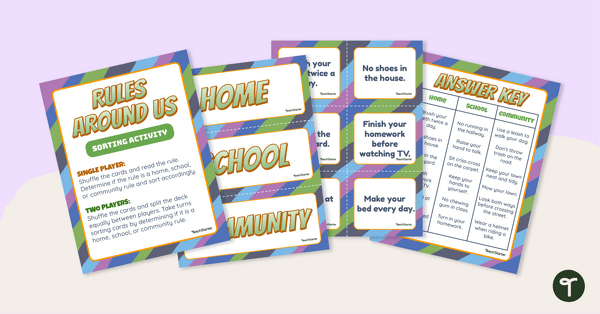
Rules Around Us Sorting Activity
Identify rules at home, in school, and around the community with a sorting activity.
- Plus Plan
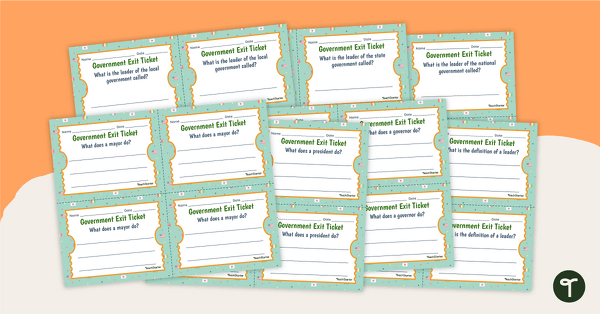
Government Exit Tickets
Assess student knowledge of governmental concepts with quick and easy exit tickets.
- Free Plan
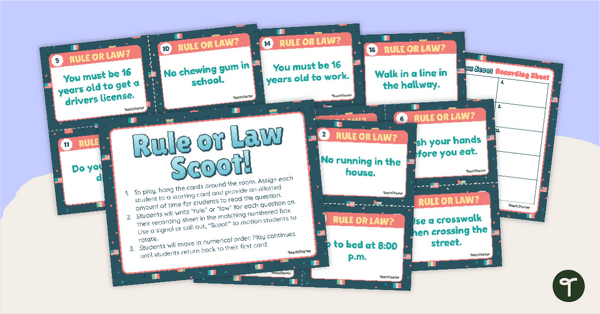
Rule or Law? SCOOT Activity
Differentiate between rules and laws with a free game of Rule or Law Scoot!
- Plus Plan
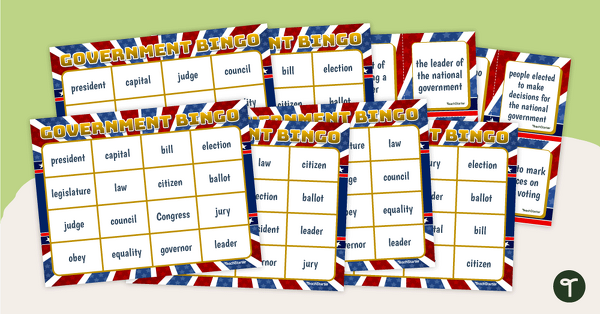
United States Government Bingo
Review concepts of the U.S. Government using a Bingo game.
- Plus Plan
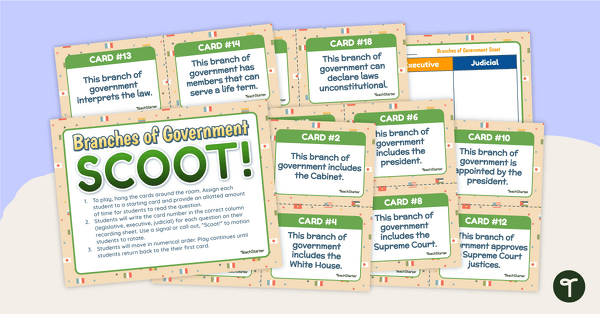
Branches of Government Scoot
Learn about the branches of the U.S. government using an exciting game of Scoot!
- Plus Plan
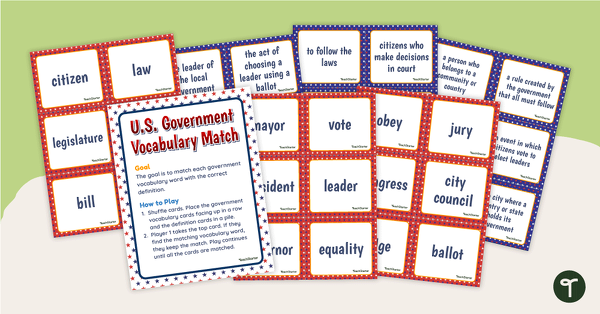
U.S. Government - Vocabulary Match
Build vocabulary of government concepts with a U.S. government vocabulary matching activity.
- Plus Plan
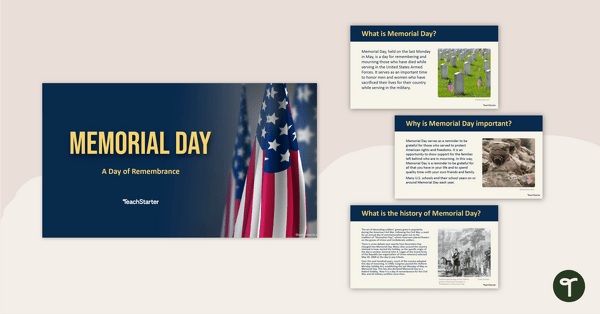
Memorial Day Teaching Presentation
Reflect and show respect on Memorial Day with this informative teaching presentation.
- Plus Plan
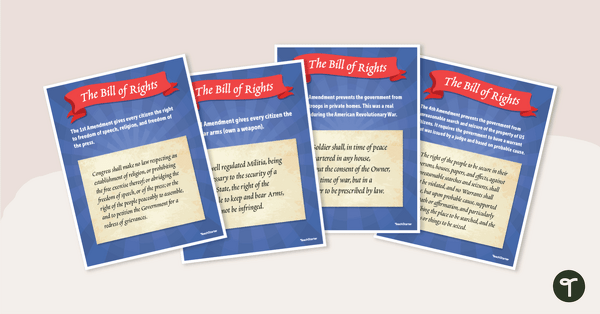
Bill of Rights Posters
Describe the concepts related to the first ten amendments of the United States Constitution.
- Plus Plan
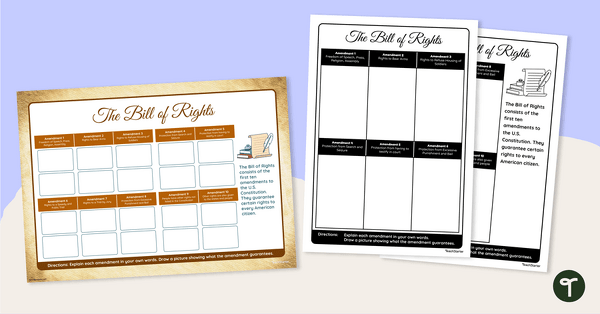
Explaining the Bill of Rights Organizer
Describe the concepts related to the first ten amendments of the United States Constitution.
- Plus Plan
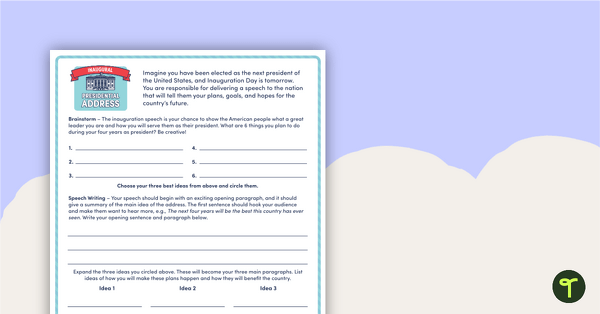
Write Your Inaugural Address
A template for students to plan and write an inaugural Presidential Address.
- Plus Plan
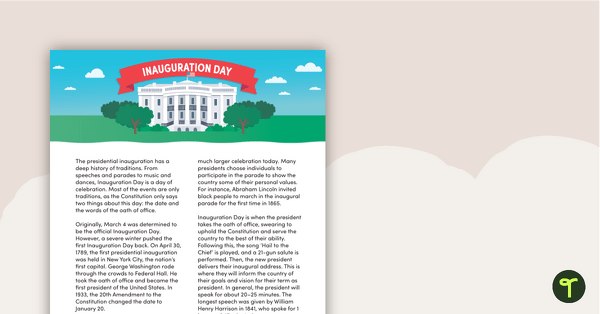
Inauguration Day – Comprehension Task
A comprehension task paired with a text about Inauguration Day.
- Plus Plan
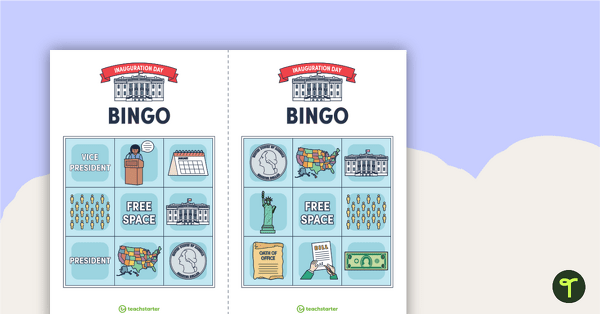
Inauguration Day Bingo
A bingo game to play around Inauguration Day.
- Free Plan
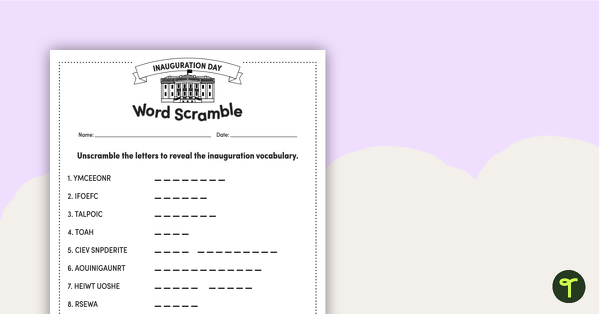
Inauguration Day Word Scramble
A word scramble to use around Inauguration Day.
- Free Plan
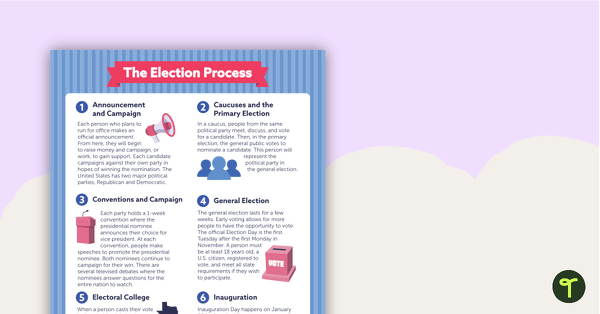
The Election Process – Classroom Poster
A poster to display in the classroom when teaching about the election process and voting.
- Plus Plan

Oppressive Governments – Comprehension Task
A comprehension task paired with a text about oppressive governments in history.
- Plus Plan
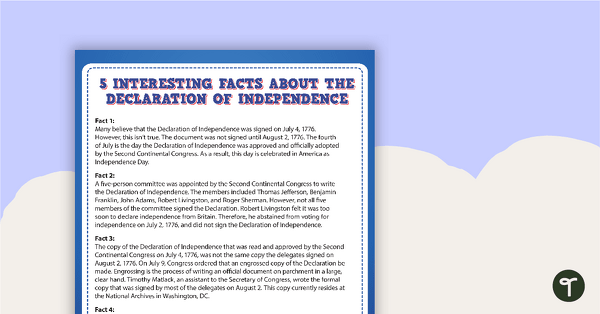
5 Interesting Facts About the Declaration of Independence
A fact sheet covering five interesting facts about the Declaration of Independence.
-
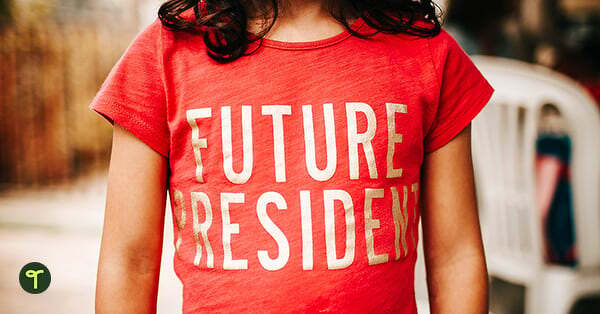
17 Presidents' Day 2024 Ideas for Teachers That Go Beyond Washington + Lincoln
These Presidents' Day ideas for kids include fun options for pre-school, kindergarten, first grade, and on up through upper elementary.